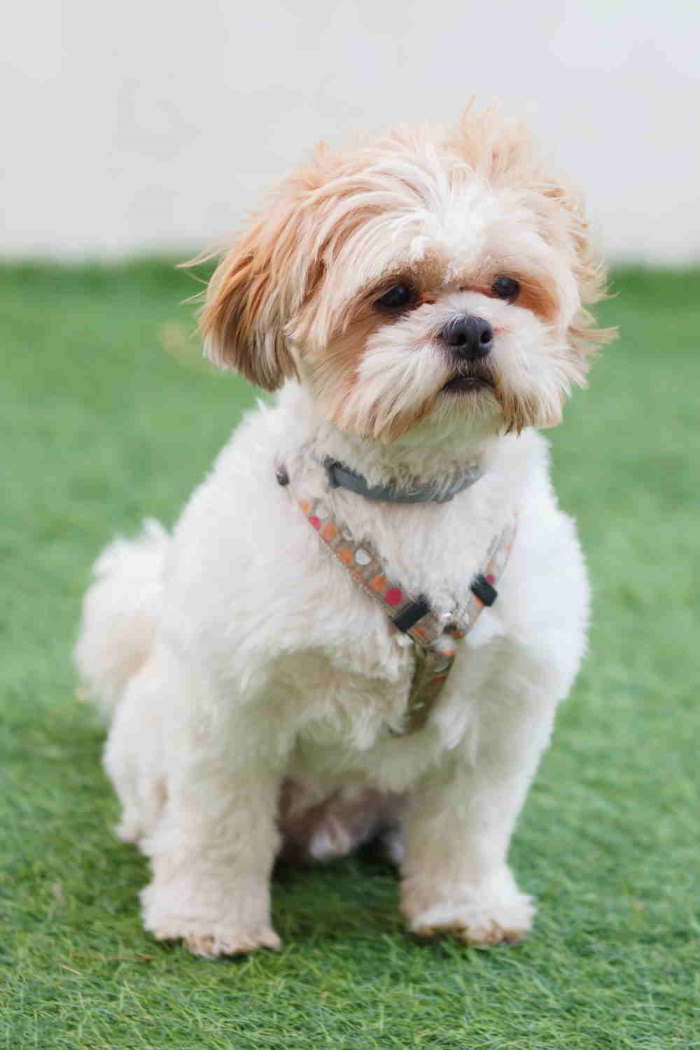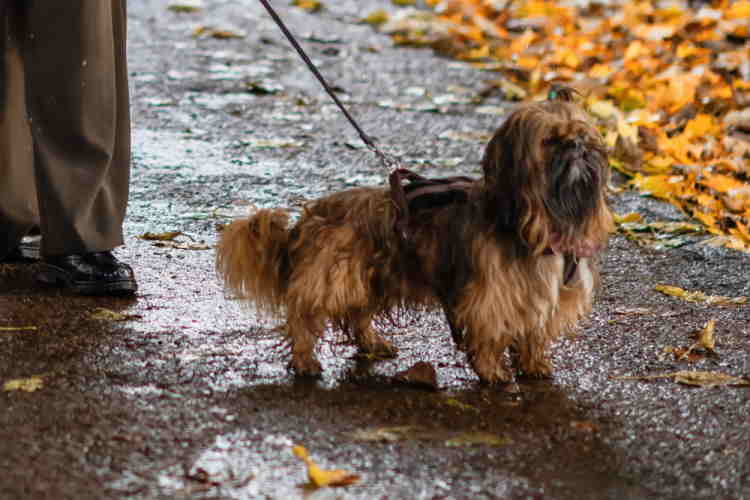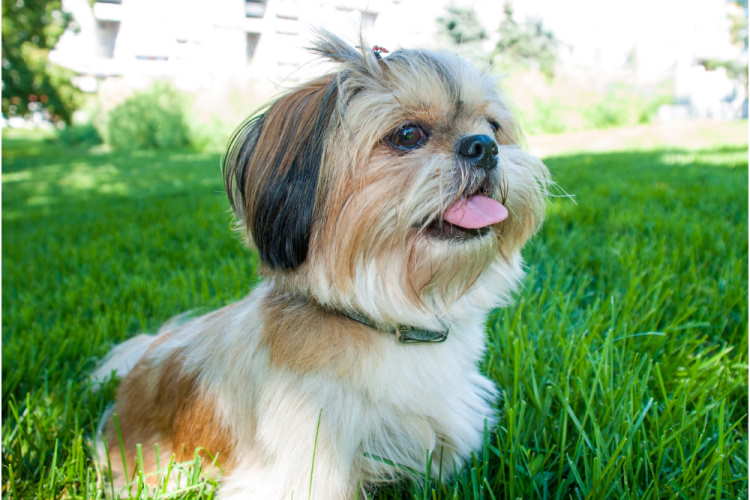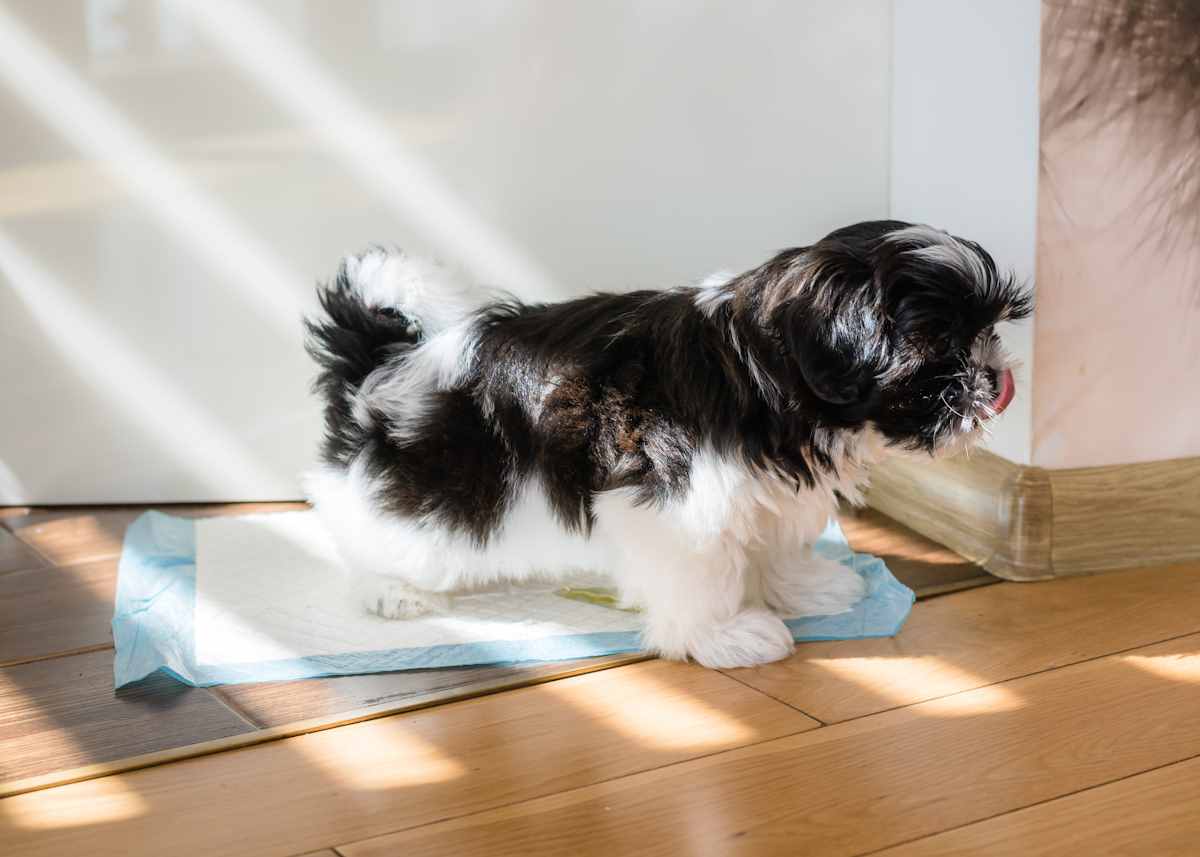Dog Harness vs. Collar for a Shih Tzu
BY MOLLY | EVERYTHINGSHIHTZU.COM
This post may contain affiliate links. Read privacy & disclosure policy for info
When you become a pup parent to a Shih Tzu, one of the likely things on your puppy checklist is a leash so you and your canine companion can go for pleasant walks together.
Sharing a walk with your little buddy is an excellent way to bond, get exercise (for the both of you), and help your dog socialize.
But, what’s the best way to use a leash with your dog, a collar, or a harness?
When walking your Shih Tzu, a dog harness can give you better control over using a collar, as it discourages leash pulling. A harness also reduces the strain on your dog's neck as it puts pressure on your dog's body instead of his trachea.

Does Your Shih Tzu Dog Need a Collar and a Harness?
A collar is an essential part of a pup’s attire, providing the perfect place for important items like an ID tag and rabies tag.
But that doesn’t mean it’s also the best place to attach a leash, at least not for certain pups.
On the other hand, you don’t put ID tags and similar items on harnesses, and they can tend to be uncomfortable for some dogs.
Therefore, it makes sense that your dog might need both a collar and a harness.
This is especially the case if you have a smaller breed dog that might be prone to tracheal collapse or respiratory issues (more on this later) or a pup that likes to pull and tug on the leash during walks.
Should You Walk Your Dog with a Collar or Harness?
If your dog doesn’t deal with any respiratory issues and doesn’t tend to pull on the leash during a walk, then a collar will work just fine.
You may not need a harness at all.
However, when it comes to Shih Tzu, the better option for walking your pup is to use a harness.
Even if your furry pal isn’t a tugger, Shih Tzu dogs are prone to several conditions that make walking with a harness the better option.
For example, Shih Tzu, with their naturally bulging (and beautiful) eyes, are prone to a condition called Proptosis.
Proptosis is when the eye can become displaced from the socket due to trauma or other reasons.
For brachycephalic breeds, like the Shih Tzu, excessive pulling at the leash, which causes massive pressure against the neck, can cause the eye to pop out of its socket.
This excess pressure against the throat can also cause your dog to choke, increase respiratory issues, and contribute to tracheal collapse.
Many smaller breeds are already susceptible to this condition when the cartilage in the trachea becomes weak and starts to flatten when your pup breathes air into their lungs.
Eventually, the condition gets so bad that the trachea can completely collapse. Adding undue pressure to your dog’s neck can exacerbate this condition.
Is a Harness or Collar Better for a Shih Tzu Puppy?

For Shih Tzu puppies, a harness is also best for walks, and any other time you need to maintain control of your dog.
Your little puppy is likely just learning to walk on a leash, so they’re bound to tug and pull, meaning a harness will be much safer and more comfortable.
You won’t need to worry about a collar pressing against your small pup’s delicate neck and causing issues.
Harnesses also tend to make it easier for you to keep your pup by your side as you walk.
Of course, you should still have a puppy collar for your pal so they can wear their ID tag.
Get the Right Size Harness for Your Shih Tzu
A harness is only going to be effective if it’s the right size for your dog.
Therefore, before you purchase one for your pup, take careful measurements and compare them to the sizing chart for the harnesses you’re considering.
You need to measure your pup’s chest around its widest point and the neck at its widest point, right above the shoulders. (Don’t base the neck measurement for the harness off of your dog’s collar).
You can also weigh your dog as an extra checkpoint for choosing the best harness.
When selecting the proper size, consider all of your measurements. If your pal’s numbers fall between two sizes, opt for the larger and ensure you get an adjustable harness.
Next, try the harness on your pup to test the fit.
You can use the finger test; slide two fingers between your dog and the harness. If they fit, this ensures your dog will be comfy, but the harness isn’t so loose that your dog can escape it.
You can also check various harness styles to find one that is best for your pup.
Some harnesses come with padding that helps keep your dog more comfortable and equally distributes pressure across your pup’s body.
Additionally, other harnesses feature materials that won’t cause long fur to tangle and mat; a good choice for Shih Tzu with long, silky coats.
Overall, take a cue from your dog. If they can’t move easily or refuse to walk in the harness, you may need to try a different type.
Can Your Dog Wear a Collar and Harness All of the Time?

In a nutshell, yes, your dog could wear a collar and a harness all of the time. Plus, you can also let your pup wear both accessories at the same time. This certainly makes things easier and faster.
However, there are a few things to consider when it comes to your Shih Tzu dog wearing a collar and harness.
- You’ll likely keep your pup’s collar on them most of the time since it’s where you keep your pal’s identifying information. This can make all the difference in a speedy reunion if your pet gets lost.
- It’s okay to leave your dog’s harness on; however, if you’re not walking your pup, it’s not necessary. Also, it’s undoubtedly comfier for your Shih Tzu if you remove the harness when you don’t need to control your pup’s movements.
- No matter what, you should remove both the harness and collar for grooming and bath sessions. It’s also helpful to give your dog periodic breaks from both items to avoid skin irritation and clean the harness and collar.
- If your dog is in a crate or kennel, it’s best to remove the collar to avoid it getting stuck on the crate and causing strangulation.
- When your dog wears a harness and collar at the same time, ensure the tags on the collar don’t get caught up under the harness.
- If you have a puppy, remove the harness after every walk and also at night. This is because curious puppies love to chew, and they can chew on the harness and get stuck, etc. Likewise, if your dog is a big chewer, it’s best to remove the harness at night at least or whenever you cant keep a close eye on your pup.
- If your Shih Tzu has long hair, it’s best to remove the harness when not in use to avoid matted fur.
When it comes to Shih Tzu, wearing a collar as a means for identification, but using a harness for walks, is ideal.
Now all that’s left to do is enjoy a walk with your best friend.



